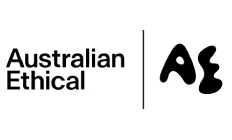Compare these super funds & more








The information in this table is based on data provided by SuperRatings Pty Limited ABN 95 100 192 283, a Corporate Authorised Representative (CAR No.1309956) of Lonsec Research Pty Ltd ABN 11 151 658 561, Australian Financial Services Licence No. 421445. In limited instances, where data is not available from SuperRatings for a product, the data is provided directly by the superannuation fund.
*Past performance data and fee data is for the period ending September 2025
Key takeaways
- When you compare super funds, look for low fees and high long-term performance returns.
- If you don't want to choose your investment option you'll be placed in your super fund's default option (MySuper).
- If you're in your 20s, 30s or 40s it's generally recommended to choose a high growth super fund option.
How to compare super funds
Here are 6 key features to look for.
Low fees
High superannuation fees will eat into your investment returns. A general rule of thumb is to make sure the fees are less than 1% your balance per year (so for a $50,000 balance, aim for annual fees around $500 or less).
High long-term performance
Look at the 5 and 10 year super fund performance instead of just the past year's performance. You want a fund that has consistent, strong performance rather than a one-off good year. For a standard balanced option, 10-year performance of 7% p.a. or better is quite good. If it's a high growth option, you can expect 10-year performance even higher than this.
An investment strategy that suits your age
Generally, you should invest in more high-risk growth assets (like shares) while you're young because you have plenty of time to ride out any short-term market falls. If you're young and want to take on more risk, compare high-growth investment options.
An investment strategy for your risk appetite
Some funds offer life-stage investment options which adjust your investments as you get older so you're not taking on too much risk. Others will offer pre-mixed options based on certain risk levels and regardless of age, e.g. balanced, conservative or high growth.
An investment approach that aligns with your values
According to Finder data, 43% of Australians are interested in their super being invested ethically. If you're passionate about investing ethically and want to exclude certain industries such as fossil fuels or tobacco, choose a fund that offers a sustainable or ethical investment option.
Insurance cover for your needs
Most funds will offer a default level of cover for death and TPD insurance automatically when you join. If you need more cover, for example, income protection, check if the fund offers it before joining. Or, you might decide that you don't need insurance cover at all.

"I ignored my super balance for years. I even kept an old fund open with a few thousand dollars in it. Bad idea. Then I consolidated funds and switched from my default balanced option to a higher growth, higher risk option. This suits me because I am decades from retirement, so I can handle some volatility. And growth is my main objective. I only wish I'd done it earlier in life!"
How to choose the right super fund for you
If you're under 35
Because you have so much time on your hands, it's generally recommended you invest via a high-growth investment option. Shares can be volatile in the short term but continue to perform exceptionally well over the long term.
If you're 35–55
When you're in your 30s and 40s, you still have 15–30 years before retirement, which is still plenty of time to stay invested in a high-growth option. As you get closer to 50 you may have a lower risk tolerance and could consider gradually reducing your exposure to shares by switching to a balanced investment option (or splitting your money between high growth and balanced).
If you're over 55
When you're in your 50s as you get closer to retirement it's generally advised to have a more balanced mix of investments. Your super will stay invested for many years even after you turn 55 so it's important to have some exposure to shares so your balance continues to grow, but you might not want all your balance invested in shares.
Remember, there's no set rule for how you should invest based on your age alone, these are just some general ideas to get you started.

"You don't need to choose an investment option when you join a new fund if you don't want to. The default options are designed to suit most people, and many are among the top-performing funds each year. If you do want to change your super investment option later, you can do this easily by logging in to your account online or via the fund's mobile app. Also, keep in mind you can split your account balance between various options. This could be a good solution if you can't decide between two different investment options."
Super funds guides and resources

Super funds for specific needs

Types of super funds
Why should you compare super funds?
According to Finder data, 58% of Australians are with the super fund that their employer chose for them and almost half (48%) of us have stuck with the same super fund for our whole life so far.
But what if the fund your employer chose isn't great? If you're stuck in an underperforming fund, it could cost you hundreds of thousands of dollars by the time you retire.
Steps to switch funds
1. Choose a new fund. The comparison table above can help you choose a new super fund.
2. Join the new fund. Complete the online application form available on the fund's website.
3. Move your super into your new fund. Just enter the details of your previous fund when you submit the application form and the new fund will arrange for your balance to be transferred over - you don't need to do this yourself.
4. Let your employer know. Let your employer know right away so they can pay your next super guarantee payment to the correct fund.
If you need a bit more help, see our guide on how to change super funds for a detailed process.
Thousands of people compare super funds with Finder every month
4.7 average rating from 812 reviews






Frequently asked questions for super funds
The lowdown on Finder Score
Wondering how we work out Finder Score? We look at products across various risk profiles from more than 40 providers and we compare them against each other to get our simple score out of 10. Products are assessed on their historical performance across 1, 3, 5 and 10 years, along with their fees. Funds that are new to the market are assessed on their available returns. The historical performance used to score these funds is intended to give you a general idea of how well a fund has performed in the past. While Finder Score can be a helpful indicator, it shouldn't be the only factor you rely on when evaluating a fund. Past performance is not a guarantee of future results, and we encourage you to consider other aspects like fees, features, and your personal needs before making a decision.
The Finder Score methodology is designed by our Insights team. Commercial partners carry no weight and all products are reviewed objectively.
Digging deeper into the Finder superannuation score
- 9+ Excellent - These products delivered outstanding performance, with low fees and essential features. They represent the most compelling overall value.
- 7+ Great - Strong performers with relatively lower fees or higher historical performance. These funds are generally competitive, though they may compromise slightly on consistency or features.
- 5+ Satisfactory - Average to above-average performance and/or fees. These products may lack consistency in returns or offer limited value for cost-conscious members.
- Less than 5 – Basic - These products lag in performance and/or charge higher fees, making them less competitive overall — despite any features offered.
We assess funds for their historical performance by grouping them by risk profiles.
Why you can trust Finder's super fund experts
 You pay nothing. Finder is free to use. And you pay the same as going direct. No markups, no hidden fees. Guaranteed.
You pay nothing. Finder is free to use. And you pay the same as going direct. No markups, no hidden fees. Guaranteed.
 You save time. We spend 100s of hours researching super funds so you can sort the gold from the junk faster.
You save time. We spend 100s of hours researching super funds so you can sort the gold from the junk faster. You compare more. Our comparison tools bring you more super funds from across the market.
You compare more. Our comparison tools bring you more super funds from across the market.
Sources
Read more on Super Funds
-
How to make the most of the $5 trillion wealth transfer
Australian women are set to inherit the majority of the $5 trillion wealth transfer taking place over the next decade. This guide helps women over 45 understand how to manage, protect and grow their inheritance to create financial freedom and a lasting legacy.
-
Compare pension funds that give you an annual income in retirement
Compare pension funds and create a flexible, tax-effective income stream in retirement.
-
How much super should I have?
The average super balance is $154,350. Compare your super balance against the average balance for your age group to see if yours is on track.
-
Worst Super Funds
Here’s a current list of the worst-performing super funds in Australia and steps for how to switch to a better fund.
-
Retirement planning in Australia
Explore essential components of retirement planning for a secure future. Dive into the intricacies of retirement planning, covering vital elements such as investment strategies, savings goals, and risk management. Gain valuable insights to chart your path towards a secure and fulfilling retirement.
-
Best Super Funds Australia
We've analysed Australian super funds to find the best-performing super funds, the best industry super funds and the best super fund for low fees. Find the right super fund for you.
-
Ethical super funds in Australia
If you want to make sure your super balance is invested in companies that reflect your values and beliefs, check out this guide to ethical investing.
-
ING Living Super: Performance, features and fees
ING Living Super offers easy online access and a choice of flexible investment options to suit your life stage and retirement goals.
-
Superannuation for sole traders and self-employed
Self-employed super contributions are a great way to boost your retirement savings, but there are some rules. See rules for contributions and compare super funds if you're self employed.
-
Best super funds for under 18s
When you start your first job you'll need to open a bank account, a super fund and understand what your tax obligations are.


